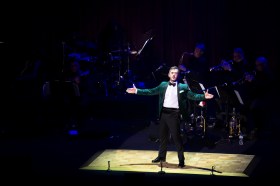Just what are the forces driving our obsession with the contemporary art of adaptation? For up until recently and historically, adaptation has not been a dirty word. The question is, has it become one?
Shakespeare himself, has been identified as a prolific “narrative thief”. But the Bard’s capacity to originally poeticise ideas, personalities, history, narratives, politics and just about everything under the sun demonstrates that ‘narrative thievery’ can become successful, legitimate adaptation.
Some of the finest adaptations of books have resulted in equally fine films, as was highlighted a recent Guardian
feature that named 50 titles illustrative of critically praised adaptation. Among them, 1984, A Clockwork Orange, To Kill a Mockingbird, The English Patient and Brokeback Mountain. And of course, vice versa. As Mark Brown points out in the aforementioned survey: “As anyone who has seen any version of Anna Karenina knows, a great book does not necessarily make a great film. And while The Godfather was a great movie, was it a great novel? Probably not.”
Indeed, for every commendable reworking there is a gaggle of critical failures. Many of these ‘new works’ are in fact commercial renovations, designed to capture the attentions of a risk-shy public with a familiar allure. Posits film scholar Gary S. Dalkin on the question of US remakes of international films: “Why not simply release the original European version in America? The answer lies in the mass American audience’s reluctance to accept subtitle…(or a film that)…does not feature familiar, Hollywood, stars.”
Tony Kushner’s critically lauded Angels In America received a recent makeover of its own: from Pulitzer Prize winning play to opera. Less about the familiarity factor (though that is certainly present), this transformation was fuelled by a hope that its ideas and story could communicate even more in another form (again, see: The Godfather). It is easy to see how the epic story of AIDS and its resultant personal and public tragedies would make for compelling opera.
Then there’s Rembrandt – The Musical, which opened in Amsterdam on July 15 this year (Rembrandt’s birthday), to a standing ovation from a 1400 strong-audience. The show cost 12.5 million dollars and will run for six months with eight shows per week. Will the painter’s legacy ensure they’ll be full houses?
On Broadway and the West End that’s exactly how it’s working, with films such as The Wedding Singer and Hairspray being turned into enormously successful stage musicals. And number one at the Great White Way box office? Wicked, a musical adaptation of the popular novel by Gregory Maguire, in turn revisionist ‘remake’ of Frank L. Baum’s classic Wizard of Oz.
So what’s driving this trend? Is it about new audiences? Or is it “cashing in” on known quantities and familiar faces when audiences are tough to come by at all, let alone for new work? It’s probably a dose of both.
The arts, and most particularly the performing arts are so difficult, so demanding and so expensive to mount that it’s always a risk. So why not help things along with some extra assurance for prospective audiences that they’ll have a great time – aka. ‘you loved the book, you’ll love the movie’, or ‘you loved the film, now see the Broadway show.’
Canadian writer Alex Good, in a essay examining the validity of Roland Barthes’s infamous ‘death of the author’ theory, suggests there’s no point in being precious about originality.
“The idea of any author, or “author,” creating a masterpiece all on their own, shivering in a garret or hiding out in a log cabin somewhere, is just naïve,” he writes.”Such romantic notions of solitary genius belong to a myth of creative individuality that doesn’t apply any longer.” On the subject of new books released into the marketplace, he adds: “Entertainment product has to be managed every step of the way. These books do not ‘come out of’ a community, they come out of a corporation, and what corporations produce are largely anonymous products.”
John Spelling seems to concur, writing in the online journal Swans about the current ubiquity of culture. “Never has so much cultural product been produced, and never has so much been consumed,” he argues. “The product consumed is now rarely even referred to as art, and when it is, the word ‘art’ has a new meaning. The subversive or spiritual qualities of art are increasingly found to be too dangerous, too offensive, and the modern media apparatus dismisses them much as it dismisses all other dissent.”
So perhaps there is a real need for an edge over the competition – an edge that could readily come from savvy adaptation of one text.
But the arts can make a profit in more ways than one. Who is to say whether economics or emotional gravitas is more important? One thing is clear: in order be effective, art must speak to us and to where we stand in the world.
And therein lies the answer. There’s room for everything: from Cats and the poems that inspired it, to Casablanca and the play it was based on. Despite a certain shrinking of the globe, it seems unlikely culture-makers world over would ever succeed in homogenizing art. There is simply too much to argue about – and ever-new ways to argue the same old issues.




